#ml 5.25
Text


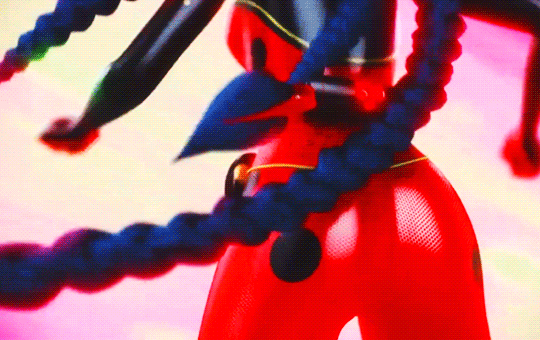



3K notes
·
View notes
Text
Miraculous minicomic: Nathalie & Gabriel (Alternate scene/Dark Version)


Poisoner Gabriel is back. I've just made a scene between Nathalie and Gabriel in the kitchen.
This can happen during the Season 5 of Miraculous (Between Protection (5.16) and Collusion (5.22)).
A self-confident Nathalie takes the moral high ground. She requests Gabriel to let Adrien lead his own life. while the father has already a business deal with Tomoe: "ship" Adrien and Kagami (but that's commercial goal for the "Perfect World").
Bonus:
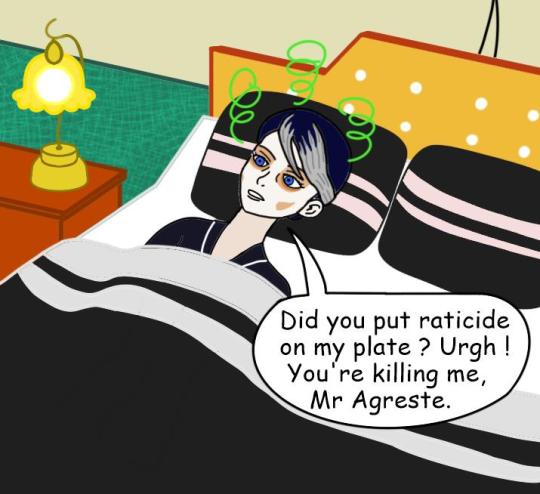

I think about a (dark) ML theory: What if Gabriel really poisoned Nathalie with his cooked plates until Representation (5.24)/the Last Day (5.25-5.26) ? He could do it in reason of Nathalie's disobedience/betrayal despite she's already sick because of the damaged Peacock Miraculous.
Miraculous: Tales of Ladybug and Cat Noir belongs to Zagtoon.
#miraculous ladybug#miraculous au#miraculous season 5#minicomic#miraculous minicomic#nathalie sancoeur#gabriel agreste#tw: poison#dark version#my art
32 notes
·
View notes
Text
Upper Limb Prosthetics Market Size, Growth Rate & Forecast 2023-2028

IMARC Group's report titled "Upper Limb Prosthetics Market Report by Product Type (Passive Prosthetic Devices, Myoelectric Prosthetic Devices, Body Powered Prosthetic Devices, Hybrid Prosthetic Devices), Component (Prosthetic Wrist, Prosthetic Arm, Prosthetic Elbow, Prosthetic Shoulder, and Others), End Use (Hospitals, Prosthetic Clinics, and Others), and Region 2023-2028", The global upper limb prosthetics market size reached US$ 732.75 Million in 2022. Looking forward, IMARC Group expects the market to reach US$ 1030.63 Million by 2028, exhibiting a growth rate (CAGR) of 5.25% during 2023-2028.
For an in-depth analysis, you can refer sample copy of the report: https://www.imarcgroup.com/upper-limb-prosthetics-market/requestsample
Factors Affecting the Growth of the Upper Limb Prosthetics Industry:
Technological Advancements:
Modern prosthetics incorporate advanced materials, microprocessors, and robotics. These technologies are improving the functionality, comfort, and aesthetics of upper limb prosthetics, making them more appealing and practical for users. Advanced prosthetics can mimic natural limb movements more accurately, offering enhanced dexterity and control. This technological improvement is not only increasing the adoption rate among new users but also encouraging existing users to upgrade their devices. Furthermore, continuous research and development (R&D) efforts are focused on integrating advanced technologies, such as artificial intelligence (AI) and machine learning (ML), leading to even more sophisticated and user-friendly prosthetics.
Increasing Amputation Cases:
The rising number of amputation cases due to various factors, including higher incidences of diseases, such as diabetes and vascular disease, traumatic injuries, and cancer, is impelling the market growth. Diabetes often leads to neuropathy and poor circulation in the limbs, which can result in amputations. Moreover, traumatic injuries from accidents or conflicts are catalyzing the need for prosthetics. Additionally, the improved survival rates in severe trauma and cancer cases due to advancements in medical care is leading to a higher number of amputees who can benefit from prosthetic limbs.
Government and Non-Governmental Organization (NGO) Initiatives:
The involvement of government bodies and non-governmental organizations (NGOs) in promoting awareness and accessibility of prosthetic devices is supporting the market growth. Many governmental organizations are providing financial assistance, subsidies, or insurance coverage for prosthetic devices, making them more accessible to a larger population. This support is particularly important in developing countries where the cost of prosthetics can be a barrier. Additionally, NGOs play a vital role in offering prosthetic solutions to underprivileged sections of society, especially in regions affected by war or conflict where the incidence of amputations is high. These initiatives not only help in making prosthetics more affordable but also in educating the public about the available options. Moreover, collaborations between the public and private sectors for research operations are also instrumental in advancing prosthetic technology.
Leading Companies Operating in the Global Upper Limb Prosthetics Industry:
Blatchford Limited (Endolite India Ltd)
Coapt LLC, Fillauer LLC
Mobius Bionics LLC
Motorica LLC.
Ortho Europe
Össur
Ottobock SE & Co. KGaA (Näder Holding GmbH & Co.)
Protunix
Steeper Group
Upper Limb Prosthetics Market Report Segmentation:
By Product Type:
Passive Prosthetic Devices
Myoelectric Prosthetic Devices
Body Powered Prosthetic Devices
Hybrid Prosthetic Devices
Passive prosthetic devices exhibit a clear dominance in the market attributed to their affordability and low maintenance.
By Component:
Prosthetic Wrist
Prosthetic Arm
Prosthetic Elbow
Prosthetic Shoulder
Others
Prosthetic arm represents the largest segment as arms are more commonly lost or impaired due to accidents or medical conditions.
By End Use:
Hospitals
Prosthetic Clinics
Others
Prosthetic clinics account for the majority of the market share. They are primary providers for fitting, customization, and maintenance of upper limb prosthetics.
Regional Insights:
North America (United States, Canada)
Asia Pacific (China, Japan, India, South Korea, Australia, Indonesia, Others)
Europe (Germany, France, United Kingdom, Italy, Spain, Russia, Others)
Latin America (Brazil, Mexico, Others)
Middle East and Africa
North America dominates the market share owing to its advanced healthcare infrastructure, greater access to cutting-edge prosthetic technology, and a strong presence of key manufacturers in this region.
Global Upper Limb Prosthetics Market Trends:
Manufacturers are offering customized prosthetic devices for specific needs and preferences of individual users. This encompasses not only the functional aspects, such as the range of motion and grip strength, but also aesthetic elements, allowing users to choose designs that reflect their style. Customized prosthetics improve user comfort and satisfaction, leading to better adaptation and a more positive overall experience. This individualized approach is particularly important in upper limb prosthetics, where dexterity and appearance play crucial roles in the quality of life of the user.
Note: If you need specific information that is not currently within the scope of the report, we will provide it to you as a part of the customization.
About Us:
IMARC Group is a leading market research company that offers management strategy and market research worldwide. We partner with clients in all sectors and regions to identify their highest-value opportunities, address their most critical challenges, and transform their businesses.
IMARCs information products include major market, scientific, economic and technological developments for business leaders in pharmaceutical, industrial, and high technology organizations. Market forecasts and industry analysis for biotechnology, advanced materials, pharmaceuticals, food and beverage, travel and tourism, nanotechnology and novel processing methods are at the top of the companys expertise.
Our offerings include comprehensive market intelligence in the form of research reports, production cost reports, feasibility studies, and consulting services. Our team, which includes experienced researchers and analysts from various industries, is dedicated to providing high-quality data and insights to our clientele, ranging from small and medium businesses to Fortune 1000 corporations.
Contact US
IMARC Group
134 N 4th St. Brooklyn, NY 11249, USA
Email: [email protected]
Tel No:(D) +91 120 433 0800
United States: +1-631-791-1145 | United Kingdom: +44-753-713-2163
0 notes
Text
Amid a difficult week for a large part of the cryptocurrency market, Ethereum (ETH) has continued to record losses, and machine learning (ML) algorithms predict more bad times for the second-largest digital asset by market capitalization in the near future.
Specifically, ML-based algorithms used by the cryptocurrency price forecasting platform PricePredictions set the price of Ethereum to reach $1,484.94 by October 31, 2023, as per the most recent information obtained by Finbold on October 12.
Ethereum 30-day price forecast. Source: PricePredictions
Provided that this prediction, relying on indicators such as relative strength index (RSI), Bollinger Bands (BB), and moving average convergence divergence (MACD), proves correct, it would represent a decline of 4% to the current price of Ethereum.
On the other hand, the price prediction algorithm over at the crypto analytics websiteCoinCodex is rather bullish on Ethereum, placing its price at $1,784.76 by the last day of October, which would indicate an increase of 15.38%, should it come true.
Ethereum price analysis
Meanwhile, Ethereum was at press time trading at the price of $1,546.9, down 1.45% on the day, as well as dropping 5.25% across the previous week and losing 3.76% over the past month, according to the most recent charts on October 12.
Ethereum 7-day price chart. Source: Finbold
At the same time, the 1-week technical analysis (TA) gauges over at the finance and crypto monitoring website TradingView are showing a bearish reading for Ethereum that suggests a ‘strong sell’ at 16, as based on oscillators in the ‘sell’ position at 2 and moving averages (MA) suggesting a ‘strong sell’ at 14.
Ethereum 1-week sentiment gauges. Source: TradingView
All things considered, Ethereum’s long-term prospects remain promising, but its short-term upward movements are, indeed, under threat, partially due to the offloading or redistribution of more than 5 million ETH by whales, which have been consistently cashing in on higher prices, as Finbold reported on October 10.
The content on this site should not be considered investment advice. Investing is speculative. When investing, your capital is at risk.
0 notes
Text
Beer Mug
Get your flashing brew cup here. Hoist up a light up mug of beer. Light up barware; Magic Matt’s got em’. The on/off switch is on the bottom. Height: 4.87 in. , 12.37 cm. Width: (Including Handle) 5.25 in. , 13.33 cm. Diameter of Brim: 3.62 in. , 9.19 cm. Volume: 16 oz. , 500 ml. LED Colors: 2 Blue, 2 Jade, 2 Red Batteries: Includes 4 Replaceable AG13 Batteries. Battery Replacement: 1. Remove…
View On WordPress
0 notes
Link
▢1 ½ cup (360 ml) Warm milk (110 F) // 270 ml or 1 cup + 2 tbsp
▢4 tbsp Butter room temperature 44 g
▢1 Egg large
▢2 ¼ tsp (7 g) Instant dry yeast (1 tbsp - 1 packet) 5.25 g
▢1 tbsp (1 tbsp) Sugar
▢1 ½ tsp Salt 6.75 g
▢4 cups (500 g) All-purpose flour 375 g
▢½ cup (60 g) All-purpose flour for kneading 45 g
2 notes
·
View notes
Text
Investigation 4 (12/6/2020): Explosion - Katsuki Bakugou
This investigation will cover the quirk of the most famous/infamous character in the BNHA fandom: Katsuki Bakugou. His ‘explosion’ quirk allows him to “secrete nitro-glycerine-like sweat”[1] from his skin and detonate it at will, and he uses the resultant explosions for direct close-range attack, movement, and illumination. The main detail to be examined therefore is the synthesis of the substance within Bakugou’s body.
To begin with, we’ll look specifically at the compound Nitro-glycerine. It is described by Encyclopaedia Britannica as “a colourless, oily, somewhat toxic liquid having a sweet, burning taste”. How exactly the taste of nitro-glycerine was discovered is not explained, and neither is the dubious use of the word “slightly”, but the entry does describe the exact stages of the decomposition of the molecule. Its extreme instability lies in its high nitrogen content. Diatomic nitrogen molecules form triple covalent bonds, and are thus very stable. Therefore, the nitrogen in its state within the nitro-glycerine molecule is unstable, as it ‘wants’ to form strong, stable triple-bonds. As the nitrogen is released from the molecule, energy is given off as heat, which allows the carbon and hydrogen atoms to react with the oxygen, releasing yet more heat. It is this second step, facilitated by the high oxygen content of the molecule, that makes nitro-glycerine so powerful as an explosive.
The instability of the compound creates difficulty – since it is in such a high energy state, it takes a lot of energy to synthesise. The commercial synthesis of nitro-glycerine involves heated nitric and sulfuric acids, but can be done at home, in an experiment not for the faint of heart (or perhaps the opposite, but we’ll get to that later). The ridiculousness of such an experiment can be summed up by a forum post by an amateur chemist using the phrase “only 65-70% concentrated HNO3 [nitric acid] and 96-98% concentrated H2SO4 [sulfuric acid]”. It’s safe to say that such a reaction is infeasible within biological environments, and most likely any environment without a few dozen blast shields and fume hoods. However, the main pathway is simply the nitration of glycerol, where each of the three hydroxide (OH) groups are replaced with a nitrate (NO3) group, and the mixture of sulfuric and nitric acid only exists to create protonated nitric acid (nitric acid with an additional H+ ion). It is this that reacts with the glycerol in an endothermic reaction, so if the two can be gathered from food then nitro-glycerine can be synthesised within Bakugou’s body.
Glycerol, referred to in the food industry as glycerine, is used as a preservative and sweetener, and as such can be found in a handful of foods, such as dried fruits, soft drinks, and icing. Despite this, the average intake of glycerol per day is rather low. Additionally, I have yet to come across a food containing nitric acid in both high enough quantities to be used for nitro-glycerine production and low enough quantities to be safe, or indeed containing nitric acid at all. The role of nitric acid in the reaction is rather indirect, though, and a safer way to obtain the nitronium (NO2+) ion could be found, specifically via nitric oxide (NO). This compound can be obtained via the ingestion of many foods, including red meat, beetroot, garlic, and dark chocolate. The compound would then bind to a protonated oxide ion, and become the desired nitronium ion.
It is important to note that when explaining his quirk, Bakugou uses the phrase “nitro-glycerine-like”. The pronunciation is ambiguous in the dub (either “secrete nitro-glycerine-like sweat, or “secrete nitro-glycerine like sweat”), but the subtitles reveal the former to be true, and therefore we know that the substance that is produced is not pure nitro-glycerine. Nitro-glycerine, despite the name, is in fact not a nitro compound, but a nitrate ester. These compounds all have the property of explosive, smokeless decomposition, but are again synthesised using nitric acid. The intake of nitric acid is unlikely to be the ingestion of the compound in solution, due to the acid’s tendency to corrode biological tissues. Bakugou’s internal organs have not yet been shown in the anime, but it is safe to assume that he does not internal chemical burns by drinking acid. The issue is therefore one of acquiring the acid (interestingly, passing electricity through moist air creates small amounts of nitric acid, a technique that could be completed with the help of Denki Kaminari) and somehow ingesting it without causing large amounts of corrosive damage to the digestive system. Therefore, the compound would most likely be synthesized rather than ingested in its native form. The synthesis of nitric acid involves the reaction between nitrogen dioxide and water, releasing nitric oxide and nitric acid. This nitric acid can then be reacted with glycerine to produce nitro-glycerine (although glycerine is relatively rare in the body and diet), or an alcohol to produce a corresponding nitrate ester. These esters are all to a certain degree explosive, especially methyl and ethyl nitrate, created with methanol and ethanol, respectively. Since methanol is incredibly toxic to humans (there’s a reason people don’t drink methylated spirits and tell you about it), it can be assumed the substance secreted by Bakugou’s skin is ethyl nitrate (formula C2H5NO3).
Now the exact compound and method of synthesis is known, we can look at some of the possible side-effects of such a quirk. The first, which has been theorised by a few different fans, is the fact that nitro-glycerine is used to treat high blood pressure. At first it may seem that this problem is irrelevant, since it is expressly stated the compound created is not nitro-glycerine, but the treatment works via nitro-glycerine’s decomposition into nitric oxide, catalysed by the enzyme mitochondrial aldehyde dehydrogenase 2. It is then the nitric oxide which causes vasodilation, not the nitro-glycerine. This is a problem due to nitric oxide’s role as a by-product of Bakugou’s production of ethyl nitrate, and thus any of the compound that enters the blood stream would be absorbed by the blood vessels and cause lowered blood pressure. This could become dangerous, as low blood pressure creates dizziness, fatigue, nausea, and in extreme cases, loss of consciousness. Usually, low blood pressure (also known as hypotension) does not need treatment, but chronic hypotension can be treated via medication to alleviate the symptoms.
Another minor issue is the lack of normal sweating. Sweat lowers body temperature by evaporating, taking energy from the skin and cooling it. Ethyl Nitrate would perform similarly to normal sweat in this scenario, with any slight differences in energy change regulated by the amount of ethyl nitrate which is secreted (just like how the amount of sweat people secrete is based on temperature). However, it would make especially sweaty areas of Bakugou’s body dangerously flammable. It should also be noted that only Bakugou’s hands are every depicted as having explosive potential, so either Bakugou only sweats through his hands, leading to incredibly clammy, flammable and dangerous hands in any slightly warm environment, or sweats normally, leading to the possibility of his explosions spreading across his whole body. If he just sweats from his hands, this also explains the disproportionately large frequency and size of explosions he can release.
It hopefully should be rather evident that sweating explosive compounds and causing them to spontaneously detonate on one’s skin is not good for one’s bodily wellbeing. The immediate worry is one of burns from temperature increase. Ethyl Nitrate burns with 1348922 Joules per mole. I can’t find any measure for the average amount of sweat on someone’s hands, but it’s safe to assume it’s only a few ml and so the explosion of jus the residual sweat on Bakugou’s hands wouldn’t do much damage to the skin, since the heat isn’t very high or prolonged. The frequent detonation of small amounts of sweat would at worst cause hardening and callousing of the skin. But what about large quantities of sweat?
One of the largest (and first) uses of Bakugou’s quirk in combat seen is when the gauntlets integrated into his hero costume are used against Deku. They allow the storage and voluntary detonation of large volumes of Bakugou’s sweat, leading to a large explosion with significant offensive capabilities. But as Newton’s third law of motion states, every action has an equal and opposite reaction. In this case, a force of equal magnitude to the one exerted on the opponent, but in the opposite direction (along Bakugou’s arm). The magnitude of such a blast could be calculated by estimating the volume of storage in the gauntlet. The gauntlets stretch across the length of Bakugou’s forearms, and have a similar width. If we approximate them to a cylinder of length 30cm (12 inches), and width 20cm (8 inches), the volume of the gauntlets is ~9500cm3. Of course, some of this space is taken up by Bakugou’s arm, so simplifying his arm to a 10cm wide cylinder (to account for some beefy forearms), the volume reduces to ~7000cm3.
Let’s then estimate that 75% of that volume is sweat storage, so the final value for the volume of sweat each gauntlet comes to approx. 5250cm3, or 5.25 litres (1.2 gallons). This amount of liquid would weigh nearly 6kg (13.2lbs), not an easy feat to swing around with one arm, let alone jump and do acrobatics with (but again, we’re observing that Bakugou has some large muscles). We know the detonation of Ethyl Nitrate releases 1348922 Joules per mole, and 5.25 litres of Ethyl Nitrate is the equivalent of 64 moles. Therefore, the explosion of one full gauntlet releases 86.3 MJ of energy, equivalent to 20kg (44lbs) of TNT.
With proper preparation and placement, 1kg of TNT can be used to destroy a small vehicle. The explosions caused by many amateur bombs are equivalent to around 10kg of TNT. It is safe to say that if the entire gauntlet were detonated at once, the building would suffer catastrophic structural damage, most likely leading to at least partial collapse, and both Deku and Bakugou would be immediately killed (its seems All Might may have been on to something here). Although the damage caused by the use of the gauntlet is severe, it does not equate to the detonation of 20kg of TNT, and therefore we can deduce that only a portion of the total capacity of the gauntlet was detonated. The question is, how much?
After examining the many different controlled explosions usefully uploaded to YouTube, I estimate that the explosion Bakugou unleashed in episode 7 equated to roughly 10kg (22lbs) of TNT, or half of the maximum force of one gauntlet. The exact force exerted by the explosion is near impossible to accurately calculate, since the gauntlets direct the blast in a line, the dimensions and material of the corridor are not fully known, and well as many other factors come into play, not to mention I can’t find an equation that includes all of the terms ,corridor dimensions’, ‘material of corridor’, ‘width of gauntlet barrel’ and ‘weight of Bakugou and Deku’. However, we can turn to Newton again to figure out the damage to Bakugou’s arm. It is here we recall Newton’s third law of motion. It means that the force applied to Bakugou is at least the same magnitude as the force applied to Deku, and almost certainly much more since some of the force that would have hit Deku instead goes into destruction of the building. According to the BNHA wiki, Bakugou is 172cm tall, and we can see he is ~2.5 wall-tile-widths from the floor. This means the tiles in the scene are around 69cm wide and tall. Japan uses the metric system for all but traditional craft, and so it is likely the tiles are some round number of centimetres, let’s say 75cm. After the blast travels past and destroys ~35 tiles, 26m or 85ft (this seems rather far away for ‘close quarters’ combat, but here we are), it hits Deku and blasts him backwards, through the door behind him which sits 20 tiles (15m or 50ft) away. The blast is then immediately shown damaging the outer wall of the building, creating a roughly circular hole three windows wide. Afterwards, we see Deku standing in a new room, with the walls now tiled differently, but the width of each tile is the same 75cm when we compare them with the identical floor tiles. This shows us he is 7 tile-widths (5m or 16ft) from the door, having travelled a grand total of 20m (66ft).
The wind speed required to blow the average person off their feet is 45mph, the speed of a significant tropical storm. To work out the force of such a breeze, and thus the minimum force Deku was hit with, we must multiply the surface area of Deku’s body in m2, the wind speed in m/s, and the density of the air in kg/m3, giving us a final measurement of kgm/s2, or Newtons. Substituting in the numbers gives us approximately 50 Newtons of force as a minimum. Assuming this force was exerted over 1 second, we can see that 1 Deku 1m/s isn’t a realistic way to blow through a solid door. Let’s go bigger.
The magnitude of a force in Newtons can be calculated by multiplying the mass of the object the force acts upon and the resultant acceleration of the object due to the force (this is Newton’s Second Law of Motion). Since Deku starts at rest and acceleration is change in velocity over time, his acceleration is simply half his final velocity. The velocity now needs to be measured, which can be done via the approximate momentum need to break down a door.
The Enforcer is a modern battering ram used by the British Police do just that. It weighs 16 kg, and assuming it can be swung at ~15m/s (lets be conservative, Deku doesn’t need any more broken bones) the momentum it carries is 240kgm/s - this can also be understood as exerting a force of 240 Newtons on the door. For Deku to exert the same force, assuming he has an above average body weight[2] of ~75kg, he would have to be travelling at 3.2m/s. Let’s round up to 5m/s to account for his flight through the air and short trip beyond the door, since going at 2.3m/s would keep one airborne for long. This means that he has a force of 45kg × 5m/s acting upon him when hit by the blast, a force of 225 Newtons. Going back to Newton’s Third Law of Motion, this means Bakugou’s arm recoils under at least ~500 Newtons of force, since the blast originates from the gauntlet, (we’re being conservative and saying around 50% of the force missed Deku). Now we must find out the damage that this force would cause.
500 newtons is a lot of force, but it’s not the only thing to keep in mind. Boxers can punch up to 2500N, but the force doesn’t last long, maybe a tenth of a second. The main thing to focus on is impulse, and we can see that punches have an impulse of only 250kgm/s. The explosion force on Bakugou’s arm is applied over a significant time, giving an impressive impulse of ~1500kgm/s, or 6 boxer’s punches at once. The force required to dislocate a shoulder at the deltoid is around 85 Newtons, which means it’s not looking good for Bakugou’s tendons. However, the human shoulder can support a lot of force. People can dead-hang an excess of 100kg for an impressively long time, the equivalent of 980 Newtons (do note that this is in the opposite direction to our scenario, and does not carry a very high impulse). Even with the sudden shock, it’s doubtful that the 500N of recoil would do anything more than a possible dislocation (again, we’ve got serious muscle to take into account), which whilst being immensely painful would not be fatal or irreparable. But since half the force was enough to fling Deku through the air, even with adequate bracing Bakugou would near certainly be accelerated backwards and into the wall only a meter or two behind him, causing severe damage to his back, ribs, limbs, skull, and gauntlets. The headwear and shoulder guards of his costume may absorb some of the impact, but depending on their structural rigidity would probably do more harm than good, especially the sides of the mask which would be rather dangerous at high velocities.
Either way, Bakugou would be quickly propelled backwards, as if standing right next to an explosion of 10kg of TNT (a rather direct parallel) or being hit by 100 golf clubs simultaneously, if he were to unleash half of the possible blast of one of his gauntlets. Firing eve one, let alone both at full power would rival many modern-day chemical explosives, and would certainly be fatal to Bakugou and anyone within a considerable radius.
To conclude, Bakugou’s body uses nitrogen dioxide and water to create nitric acid, which is reacted with ethanol to produce ethyl nitrate. This is the explosive substance that Bakugou sweats, and it facilitates the explosions he can produce. Small amounts of the compound, as present on Bakugou’s skin, could be detonated, but to little effect. However, the storage of the compound allows significant explosive potential, with half of one gauntlet having the rough explosive power of 10kg of TNT, the equivalent of one small conventional bomb.
[1] Season 1 Episode 7: Deku vs Kaachan
[2] Season 1 Episode 3: Roaring Muscles
If you liked this investigation and want to have a say in the next one, then make sure to send a recommendation for which quirk I should investigate!
#bnha#boku no hero academia#mha#my hero academia#bakugou katsuki#katsuki bakugou#tw: bomb#tw: explosives#quirk investigation#bnha analysis
9 notes
·
View notes
Text
The World’s Most Top 10 Valuable Sports Empires 2022
The New York Yankees are Major League Baseball’s most important establishment, worth $5.25 billion according to Forbes’ observation last year. Be that as it may, the group’s proprietors haven’t halted there: Yankee Global Enterprises likewise has stakes in ruling MLS champion New York City FC, the YES Network and Legends Hospitality-which works with sports and amusement associations and settings…

View On WordPress
0 notes
Text


1K notes
·
View notes
Text
BATISMO E SEUS SIGNIFICADOS
I) ETIMOLOGIA E SIGNIFICADO
O substantivo “batismo” é derivado de “baptõ” do grego, significa molhado (Jo 13.26), tingido (Ap 19.13). “Baptisma” consiste nos processos de imersão, efusão e aspersão. “Baptismos” é usado para mencionar à lavagem cerimonial de coisas (Hb 9.10). O verbo grego “baptizõ” pode ser traduzido por batizar, imergir, tingir, derramar, lavar (Lc 11.38).
No dicionário português: batismo = admissão solene em um grupo; adulteração de produtos puros, etc.
No dicionário bíblico: batismo é o ritual religioso, o qual normalmente utiliza-se de água sobre o iniciado, através de imersão, efusão ou aspersão.
II) BATISMO NOS RITUAIS RELIGIOSOS
BATISMO NO JUDAÍSMO:
Utilizado pelos judeus como lavagem cerimonial de pessoas e ou objetos, através da obediência e da fé (Lv 8.5-6, 35; Nm 19.1-9).
A lavagem cerimonial levítica não passava de rituais de purificação, elas se voltavam a coisas externas e não da impureza moral, não tinha relação direta com o abandono do pecado, do arrependimento e da salvação (Hb 9.1, 9-10).
Os profetas de Deus realizavam um batismo, “lavagem na água”, que curava as enfermidades (2Rs 5.1, 8-10, 14; Jo 5.2-4; 9.6-7, 11); tratava-se de um ritual conduzido pelo poder do Espírito de Deus.
BATISMO DE ARREPENDIMENTO:
Também chamado de batismo de João Batista; simbolizava o reconhecimento do pecado, seguido da vontade de abandona-lo, e com o propósito de encaminhar os judeus ao Messias prometido (Mc 1.4-8; Jo 1.29-31).
João Batista batizava com água para arrependimento, um símbolo exterior de uma mudança interior; a água era um cerimonial e não tinha nenhum efeito purificador; o batismo com água era externo e físico (At 19.1-5) e tinha o intuito de preparar os judeus, que demonstrassem arrependimento, para receberem um batismo superior, digno e poderoso, um batismo interno, espiritual e purificador (Mt 3.1-6, 11; Hb 1.3).
Os motivos dos judeus buscarem o batismo de João Batista, era devido as exortações deixadas pelos profetas de Deus; Israel sempre foi advertido a buscar a purificação, a qual era realizada pelo batismo cerimonial do lavar-se em água (Jo 3.22-27); paralelo ao batismo de arrependimento, João Batista anunciava um batismo superior, um de benção e outro de juízo e condenação (Mt 3.11; Ez 18.30-32; Is 1.16-20).
Aqueles que obedeciam ao chamado de João, confessavam seus pecados e reconheciam sua incapacidade de entrar no futuro Reino do Messias (Mc 1.14-15; Jo 3.5).
Obs.: O batismo de João Batista foi utilizado no período da transição, digo, no final da primeira aliança até o início da nova aliança.
BATISMO NAS ÁGUAS:
É um ritual simbólico na qual o homem dá testemunho de sua pecaminosidade, de seu arrependimento e de sua identificação com Cristo, na sua morte e na ressurreição (At 8.34-38; 22.12-16).
O batismo nas águas trata-se de uma cerimônia ministrada por homens e para homens, a qual por si só, não os capacita para entrarem no Reino de Deus (Jo 3.3, 7-8; At 8.9-23).
O batismo nas águas está relacionado ao batismo de João Batista; entretanto, não está condicionado a nacionalidade do iniciado; é um ritual que simboliza a remoção do pecado, a limpeza da imundície moral; simboliza a purificação no homem (Is 1.16; At 22.16); todavia, a purificação real é realizada pelo Batismo de Jesus Cristo, denominado por batismo com o Espírito Santo (Ez 36.25-27; Mc 1.4, 7-8; Ef 5.25-27; Tt 2.14; Hb 9.14; 1Jo 1.7).
Obs.: Este ritual, “batismo nas águas”, permanece com ênfase em todas as religiões, e na sua maioria é utilizado como forma de admissão solene do iniciado, segundo as doutrinas daquela denominação. Reflita: (Cl 2.8, 17, 20-23).
III) BATISMO DE JESUS CRISTO
BATISMO COM O ESPÍRITO SANTO:
É o batismo de Jesus Cristo, o qual é real e espiritual! (Mt 3.11). Não é ritualístico e nem simbólico; o recebemos quando desejamos o arrependimento e cremos no evangelho de Cristo; ele transforma o crente ainda pecador em filho de Deus (Gl 3.26-29; Ef 4.3-6).
O batismo com o Espírito Santo é o selo de Deus; nos garante a salvação (Ef 1.13-14) e nos transforma na Igreja de Jesus Cristo, onde nos tornamos membros de um único corpo, o qual Cristo é o cabeça (1Co 12.12-13, 27; Ef 4.15-16).
Ser batizado com o Espírito Santo é ser revestido do poder de Cristo (Lc 24.36, 49; At 1.8; Rm 13.13-14; Gl 3.27), é ser capacitado para conhecer os mistérios de Deus (Mt 13.11; 1Jo 2.20). Os frutos do Espírito, demonstrado no decorrer da vida do cristão, destaca a evidência do batismo com o Espírito Santo (Gl 5.22-25).
O batismo com o Espírito Santo (At 19.1-6), foi anunciado pelos profetas no velho testamento (Ez 36.25-27), e após o sacrifício de Cristo, o batismo se torna realidade a todos que creem no Evangelho de Jesus, independentemente de qualquer ritual humano ou religioso (Jo 3.36; At 11.1-3, 11-18; 2Co 1.21-22; Ef 1.13; Cl 2.6-12).
BATISMO DE SANGUE:
O batismo de sangue simboliza o martírio em defesa da fé cristã. O sofrimento, a tortura, a pena de morte, são derramados sobre aqueles que recebem o batismo de sangue.
Jesus Cristo recebeu um batismo de sangue de caráter substitutivo (Lc 12.49-50), e seus apóstolos também o experimentaram, porém não de caráter substitutivo, mas em comunhão aos sofrimentos do Mestre e em defesa da fé (Mc 10.35-40).
BATISMO COM FOGO:
Trata-se de um batismo que ocorrerá no futuro, no fim dos tempos e após a ressurreição dos mortos, onde todos os seres humanos passarão pelo fogo do Senhor; todavia, o fogo proporcionará resultados diferenciados entre descrentes e crentes (Dn 12.2; 2Ts 1.6-10):
O batismo com fogo, será um batismo de julgamento e destruição dos descrentes (Ml 4.1; Mt 3.7, 10-12; Am 5.6; Jo 3.36; Hb 6.7-8). A conduta pecaminosa do homem e a ausência do arrependimento tem por consequência a ira de Deus (Ez 36.16-18; 2Pe 3.7, 9; Hb 10.26-27) e o batismo com fogo, recairá a todos aqueles que não creram em Jesus Cristo (2Ts 1.8-10), será uma fatalidade aos descrentes no dia do Juízo Final (Ap 20.9, 15).
O batismo com fogo, também será um batismo de purificação, todavia, destinado ao cristão. No Dia do Senhor, o Espirito de Deus provará a qualidade das obras de todos os salvos (1Co 3.11-15) e da fé de cada crente (1Pe 1.7), momento em que o Senhor limpará por completo todo pecado e impureza que ainda exista no cristão (Zc 13.8-9), transformando-o à imagem e semelhança de seu criador (1Co 15.42-44, 48-49).
IV) TIPOLOGIA BÍBLICA
“TIPOS”, ou figuras, é um correspondente de sentido simbólico utilizado no velho testamento (primeira aliança), os quais prefiguram uma realidade no novo testamento (nova aliança):
Os sacerdotes foram batizados com água, com óleo e com sangue (Lv 8. 5-6, 30).
O Rei Davi foi ungido com óleo e recebeu o Espírito Santo, “representa o batismo de Jesus” (1Sm 16.13).
Noé e os que foram salvos na arca, na época do diluvio, representam um batismo para salvação (1Pe 3.18-21).
A nação de Israel foi figurativamente batizada quando na travessia do mar vermelho e na peregrinação no deserto (1Co 10.1-2).
Rener Luz
0 notes
Text
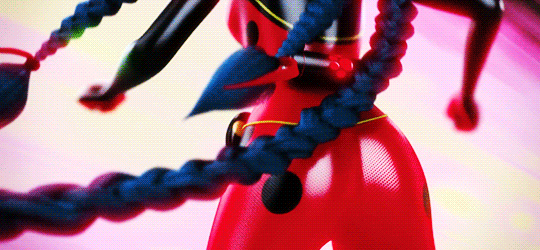





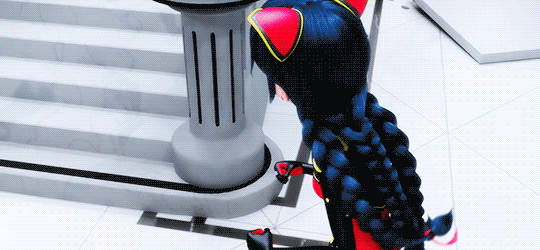





BUGNOIRE APPRECIATION POST
#miraculous ladybug#mledit#bugnoire#monarch#ml 5.25#ml 5.26#gifs#*#ml#ml spoilers#ml conformation#ml recreation
1K notes
·
View notes
Photo

🔥DOPE NITRO 500 ml COLORS 🌈🎨 5.25€ v predajni #FlowControlShop & E-SHOPE: 🌐 www.Flow-Control.sk ••• #Dope Action NITRO ťa nenechá v štichu, tak ako poznáš ich starších súrodencov: DopeNitro 500ml Bielu, tak čierne odtiene bezproblémovo si poradia s chrómom a inými farbami pri prekrývaní vrstiev a línií ... • Vysoký tlak, matný finiš, ľahké ovládanie ventilu, skvelá kryvosť, použiteľné v rôznom počasí, odolné slnečnému žiareniu... Toto všetko trefne definuje NOVÉ DOPE 500ml NITRO COLORS 🔥🔥🎯🎯💣💣💯🙏🏻 • Máš sa na čo tešiť a toto nie je všetko...STAY TUNED 😉💨🎯💣 #DopeCans #Dope #FlowControlShop 🇸🇰🇸🇰#Bratislava #Ruzinovska44 ��🏁 #graffitiSlovakia #graffitiBratislava #ActionCans #bombing #Burners #SilverKiller #nitro #DopeNitro #DopeNitro500ml #FlowControlGraffitiShop #SlovakGraffitiShop 🇸🇰🇸🇰#TimeForSomeAction 🚇🚞🚈💣💣💨💨🔥 thx: @dopecans 🙏🏻and for text @robr_motivator https://www.instagram.com/p/CFunvi8JAFu/?igshid=18b34s996swkx
#flowcontrolshop#dope#dopecans#bratislava#ruzinovska44#graffitislovakia#graffitibratislava#actioncans#bombing#burners#silverkiller#nitro#dopenitro#dopenitro500ml#flowcontrolgraffitishop#slovakgraffitishop#timeforsomeaction
0 notes
Text
Garnier Color Naturals Hair Color Creme Cinnamon Chocolate 5.25

Garnier Color Naturals Hair Color Creme Cinnamon Chocolate 5.25
Natural, long lasting and shiny color
Nourishes as it colors for upto 8 weeks
100% grey coverage
Description:
The 1st nourishing hair color with Olive Oil, Avocado and Karite.
1. 8 weeks of nourishment
The unique creamy formula, with a conditioner enriched with 3 nutritive ingredients - olive, avocado and karite - smoothes and deeply nourishes the hair.
A protective barrier is created to prevent the hair from damage. A second ration of olive oil in the after color care makes hair softer, incredibly shiny and always looking fabulous.
2. Richer color
With protected and nourished hair, color is amazingly rich and long lasting. A rich color that covers 100% of your grey hair.
Contains: 1 bottle of developer milk (60 ml), 1 tube of colorant cream (40 ml), 1 color care conditioner (10 ml), 1 pair of protective gloves, 1 instruction leaflet.
How to Use:
Color Naturals is easy to apply
Step 1 : Pour the developer base and the creamy colourant in a non metallic bowl.
Step 2 : Mix them together with a hair coloring brush and stir well till the mixture is smooth in texture.
Step 3 : Application:
- Keep your gloves on, apply the mixture to dry, unwashed hair.
- Start by applying the mixture to the roots making sections separating the hair strand by strand.
- Quickly spread the leftover mixture through the rest of the hair.
- Ensure that all hair is covered by the mixture.
Read the full article
0 notes
Text
BATISMOS BÍBLICOS
BATISMO E SEUS SIGNIFICADOS DA ETIMOLOGIA: _ O substantivo “batismo” é derivado de “baptõ” do grego, significa molhado (Jo 13.26) , tingido (Ap 19.13), etc. _ “Baptisma” consiste nos processos de imersão, efusão e aspersão. _ “Baptismos” é usado para mencionar à lavagem cerimonial de coisas (Hb 9.10). _ No dicionário português: Admissão solene em um grupo; adulteração de produtos puros, etc. _ No dicionário bíblico: É o ritual religioso, o qual normalmente utiliza-se de água sobre o iniciado, através de imersão, efusão ou aspersão. _ O verbo grego “baptizõ” pode ser traduzido por batizar, imergir, tingir, derramar, lavar (Lc 11.38), etc. DOS RITUAIS RELIGIOSOS: I – BATISMO NO JUDAÍSMO: _ Utilizado pelos judeus como lavagem cerimonial de pessoas e ou objetos, através da obediência e da fé (Lv 8.5-6, 35 ; Nm 19.1-9). _ A lavagem cerimonial levítica não passava de rituais de purificação, elas se voltavam a coisas externas e não da impureza moral, não tinha relação direta com o abandono do pecado, do arrependimento e da salvação (Hb 9.1, 9-10). _ Os profetas de Deus realizavam um batismo (lavagem na água) que curava as enfermidades (2Rs 5.1, 8-10, 14 ; Jo 5.2-4; 9.6-7, 11). II – BATISMO DE ARREPENDIMENTO: _ Também chamado de batismo de João Batista, (Mc 1.4-5, 7-8 ; Mt 3.1-2). Aqueles que obedeciam ao chamado de João confessavam seus pecados e reconheciam sua incapacidade de entrar no futuro Reino do Messias, assim como Davi reconheceu sua pecaminosidade (Sl 51.1-7). _ O batismo de João Batista simbolizava o reconhecimento do pecado, seguido da vontade de abandona-lo, e com o propósito de encaminhar o iniciante ao Messias prometido (Mt 3.7-8 ; Jo 1.29-31). _ Os motivos dos judeus buscarem o batismo de João, era devido as exortações deixadas pelos profetas de Deus, onde o povo foi advertido a buscar a purificação, a qual é realizada pelo batismo cerimonial do lavar-se em água (Jo 3.22-27) e ao mesmo tempo o batismo de João anunciava um batismo superior de benção e outro de juízo e condenação (Mt 3.11 ; Ez 18.30-32 ; Is 1.16-20). III – BATISMO NAS ÁGUAS: “Cristianismo” _ É um batismo simbólico na qual o homem da testemunho de sua pecaminosidade, de seu arrependimento e de sua identificação com Cristo na sua morte, no seu sepultamento e na sua ressurreição (At 8.34-38; 22.12-16 ; Cl 2.12). _ O batismo nas águas é uma ordenança de Jesus Cristo (Mt 28.18-19), trata-se de uma cerimônia ministrada por homens e para homens, a qual por si só, não os capacita para entrarem no Reino de Deus (Mc 16.16; Jo 3.5). _ O batismo nas águas é um ritual que simboliza a remoção do pecado, a limpeza da imundície moral, ou seja, a purificação do homem (Is 1.16 ; At 22.16). Obs.: a purificação real é realizada pelo próprio Deus (Ez 36.25 ; Ef 5.25-27 ; Tt 2.14 ; Hb 9.14 ; 1Jo 1.7). DO PODER DE JESUS CRISTO: I – BATISMO COM O ESPÍRITO SANTO: _ É o batismo de Jesus Cristo (Mt 3.11), ele não é ritualístico e ou simbólico, ele é espiritual e real; ele transforma o crente ainda pecador em filho de Deus e o incorpora na Igreja de Cristo (At 11.12-17 ; 1Co 12.13 ; Gl 3.26-27). _ Ser batizado com o Espírito Santo é ser revestido do poder de Cristo (Lc 24.36, 49 ; At 1.8 ; Rm 13.13-14 ; Gl 3.27), é ser capacitado para conhecer os mistérios de Deus (Mt 13.11 ; 1Jo 2.20). _ O batismo com o Espírito Santo (At 19.1-6), foi anunciado pelos profetas no velho testamento (Ez 36.25-27); e a evidencia do batismo com o Espírito Santo no crente, são os frutos do Espírito (Gl 5.22-24). II – BATISMO COM FOGO: _ Trata-se de um batismo que ocorrerá no futuro, no “Dia do Senhor”, o qual possui duas interpretações coerentes: _ A primeira fala de um batismo de julgamento e destruição dos descrentes (Ml 4.1 ; Mt 3.7, 10-12 ; Am 5.6 ; Jo 3.36; Hb 6.7-8). _ A conduta pecaminosa do homem e a ausência do arrependimento tem por consequência a ira de Deus (Ez 36.16-18 ; 2Pe 3.7, 9 ; Hb 10.26-27). _ A segunda fala de um batismo purificador, quando no Dia do Senhor, o Espirito Santo provará a qualidade das obras de todos os salvos (1Co 3.11-15), e da fé de cada crente (1Pe 1.7); momento em que o Senhor limpará por completo todo pecado e impureza que ainda existir no crente (Zc 13.8-9), transformando-o à imagem e semelhança de seu criador (1Co 15.42-43, 48-49). III – BATISMO DE SANGUE: _ O sofrimento e a morte física são derramados sobre aquele que recebe o batismo de sangue. _ Jesus Cristo recebeu um batismo de sangue de caráter substitutivo (Lc 12.49-50), e seus apóstolos também o experimentaram, porém não de caráter substitutivo, mas em comunhão aos sofrimentos do Mestre (Mc 10.35-40). DA TIPOLOGIA BÍBLICA: _ Obs: “Tipos”, ou figuras, é um correspondente de sentido simbólico utilizado no velho testamento, os quais prefiguram uma realidade no novo testamento. _ Os sacerdotes foram batizados com água, com óleo e com sangue (Lv 8. 5-6, 30). _ Davi foi ungido com óleo e recebeu o Espírito Santo, “representa o batismo de Jesus” (1Sm 16.13). _ Noé e os que foram salvos na arca no dia do diluvio, representam um batismo para salvação (1Pe 3.18-21). _ Semelhantemente a nação de Israel foi figurativamente batizada quando na travessia do mar vermelho e na peregrinação no deserto (1Co 10.1-2). R. Luz
2 notes
·
View notes
Photo
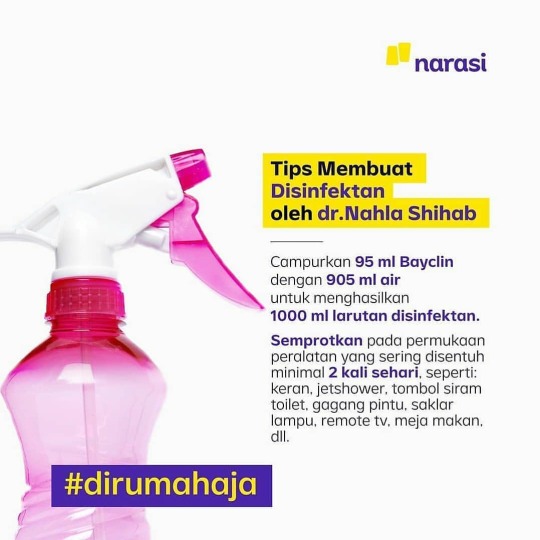
Tips praktis membuat cairan disinfektan. Bisa kita coba saat #dirumahaja Disinfektan perlu kita lakukan sehari 2x (pagi dan sore) di permukaan alat yang sering disentuh, seperti gagang pintu, saklar lampu, telepon remote tv/ac, keran, jet shower, alat sentor toilet, meja makan, sofa yg plg sering dipake. Cara bikin cairan disinfektan sendiri: - Bayclin 95 ml ditambah air 905 ml (untuk menjadi total 1000ml/1 L). - Bayclin, yang sering digunakan sebagai bahan bleaching/pemutih, mengandung sodium hypochlorite (natrium hipoklorit) dengan konsentasi 5.25%. - Untuk bahan disinfektan, dibutuhkan natrium hipoklorit 0.5%. - Jadi untuk mendapat konsentrasi yang sesuai, perlu pengenceran. ----- Reposted from @narasi.tv Nah ini ada tips dari dokter @nahlashihab yang bisa kamu coba saat #dirumahaja. Gunakan untuk menyemprot bagian-bagian yang sering disentuh di rumah kamu minimal 2 kali sehari ya. . . #bergerakdari #narasi #smkmututemanggung #sekolahgenerasibaik #sekolahgenerasimilenial #sekolahgenerasiqurani #smartschool #smkterbaik #smkbisa #temanggung #jawatengah #lawancovid19 (di Temanggung, Jawa Tengah, Indonesia) https://www.instagram.com/p/B9xsmqCgySJ/?igshid=1ajhrfsmyq2t8
#dirumahaja#bergerakdari#narasi#smkmututemanggung#sekolahgenerasibaik#sekolahgenerasimilenial#sekolahgenerasiqurani#smartschool#smkterbaik#smkbisa#temanggung#jawatengah#lawancovid19
0 notes
Text
Methoxycarbonyl-L-tert-leucine CAS#: 162537-11-3
IdentificationPhysical DataSpectraRoute of Synthesis (ROS)Safety and HazardsOther Data
Identification
Product NameMethoxycarbonyl-L-tert-leucineIUPAC Name(2S)-2-(methoxycarbonylamino)-3,3-dimethylbutanoic acidMolecular Structure

CAS Registry Number 162537-11-3MDL NumberMFCD08275827NACRESNA.22Synonyms(S)-2-(methoxycarbonylamino)-3,3-dimethylbutanoic acid, (S)-2-((methoxycarbonyl)amino)-3,3-dimethylbutanoic acid, (S)-2-(methoxycarbonylamino)-3,3-dimethylbutyric acid, (S)-2-methoxycarbonylamino-3,3-dimethyl-butyric acid, N-(methoxycarbonyl)-L-tert-leucine, N-methoxycarbonyl-(L)-tert-leucine, N-methylxycarbonyl-L-tert-leucine, Ac-Tle-OH, Moc-Tle-OH, 162537-11-3Molecular FormulaC8H15NO4Molecular Weight189.211InChIInChI=1S/C8H15NO4/c1-8(2,3)5(6(10)11)9-7(12)13-4/h5H,1-4H3,(H,9,12)(H,10,11)/t5-/m1/s1InChI KeyNWPRXAIYBULIEI-RXMQYKEDSA-NCanonical SMILESCC(C)(C)C(C(=O)O)NC(=O)OC
Patent InformationPatent IDTitlePublication DateKR2017/31307Diphenyl sulfate derivatives or pharmaceutically acceptable salts thereof, preparation method thereof and pharmaceutical composition for use in preventing or treating hepatitis C virus related diseases2017US2014/343290PROCESS FOR THE PREPARATION OF ATAZANAVIR OR ITS BISULFATE SALT 2014WO2012/122716TETRACYCLIC XANTHENE DERIVATIVES AND METHODS OF USE THEREOF FOR TREATMENT OF VIRAL DISEASES2012WO2011/701315-AMINO- 4-HYDROXYPENTOYL AMIDES2011WO2011/80562NOVEL AZA-PEPTIDES CONTAINING 2,2-DISUBSTITUTED CYCLOBUTYL AND/OR SUBSTITUTED ALKOXY BENZYL DERIVATIVES AS ANTIVIRALS2011
Physical Data
AppearanceWhite powderSolubilitySoluble in ethyl acetate and methanol.
Melting Point, °C 106-108108-109
Spectra
Description (NMR Spectroscopy)Nucleus (NMR Spectroscopy)Solvents (NMR Spectroscopy)Frequency (NMR Spectroscopy), MHzOriginal Text (NMR Spectroscopy)Chemical shifts1Hdimethylsulfoxide-d63001H NMR (DMSO) δ 12.51 (bs, 1H), 7.28 (d, 1H), 3.80 (d, 1H), 3.53 (s, 3H), 0.93 (s, 9H); Chemical shifts1Hchloroform-d15001H NMR (CDCl3, δ = 7.26 ppm, 500 MHz): 9.57 (br s, 1H), 5.31 (d, 1H), 4.20 (d, 1H), 3.70 (s, 3H), 1.03 (s, 9H)
Description (IR Spectroscopy)Original Text (IR Spectroscopy)in KBrIR ( Br, cm 1 ): 3379, 2974, 1727, 1688, 1546, 1466, 1332, 1263. 121 1 , 1070, 1034, 1018, 843, 696
Route of Synthesis (ROS)

Methoxycarbonyl-L-tert-leucine CAS#: 162537-11-3
ConditionsYieldWith sodium hydroxide In 1,4-dioxane; water at 60℃; for 18h; pH=8 - 9;
Experimental Procedure
Step 1: Synthesis of (S)-2-(methoxycarbonylaniino)-3,3-dimethylb tanoic acid:A stirred solution of (S)-2-amino-3,3-dimethylbutanoic acid (about 5.0 g, 38. 16 mmol) in Dioxane (about 20 ml) and sodium hydroxide (2N, 62 ml, PH = 8-9) at about 0 °C, methychlroformate (about 5.88 ml, 76.33 mmol) was added drop wise and stirred at about 60 °C for about 18 hours. The reaction mixture was cooled to room temperature, extracted with DCM, the aqueous layer was separated and acidified with I N HCl. The resulting solution was extracted with EtOAc, dried over Na2S04 and the solvent was evaporated under reduced pressure. The resulting crude was stirred in hexane and decants to afford the title compound as a solid. Wt: 8.5 g: Yield: quantitative; NMR (300 MHZ, CDCI3): δ 5.25 (d, 1 H, J = 10.5 Hz), 4. 19(d, 1 H, J = 9.6 Hz) 3.70 (s, 3H), 1 .03 (s, 9H); Mass: ' 188 ( 100%); IR ( Br, cm 1 ): 3379, 2974, 1727, 1688, 1546, 1466, 1332, 1263. 121 1 , 1070, 1034, 1018, 843, 696. 100%With sodium hydroxide In 1,4-dioxane; water at 25 - 60℃; for 22h;
Experimental Procedure
Example 1; methyl (1S)-1-( (12- -2- hydrazino} carbonyl)-2, 2-dimethylpropylcarbamate; Example 1A; (2S)-2- -3,3-dimethylbutanoic acid; (L)-tert-Leucine (10 g, 0.076 mol) was dissolved in 1,4-dioxane (40 mL) and treated with 2M NaOH (125 mL, 3.2 equivalents) followed by dropwise addition of methyl chlorofonnate (11.2 mL, 1.9 equivalents) at 25°C. The mixture was heated at 60°C for 22 hrs, cooled, and extracted twice with dichloromethane. The aqueous layer was separated, cooled in ice bath, and acidified with 4N HC1 (60 mL). The mixture was extracted three times with ethyl acetate, and the organic layer was separated, dried with sodium sulfate, filtered, and the solvents were evaporated to give 14.1 g (98%) of the title compound 98%Stage #1: L-tert-Leucine; methyl chloroformate With sodium hydroxide In 1,4-dioxane; water at 25 - 60℃; for 22h;
Stage #2: With hydrogenchloride In water
Experimental Procedure
1A (2S)-2--3,3-dimethylbutanoic Acid
EXAMPLE 1A (2S)-2--3,3-dimethylbutanoic Acid (L)-tert-Leucine (10 g, 0.076 mol) was dissolved in 1,4-dioxane (40 mL) and treated with 2M NaOH (125 mL, 3.2 equivalents) followed by dropwise addition of methyl chloroformate (11.2 mL, 1.9 equivalents) at 25° C. The mixture was heated at 60° C. for 22 hrs, cooled, and extracted twice with dichloromethane. The aqueous layer was separated, cooled in ice bath, and acidified with 4N HCl (60 mL). The mixture was extracted three times with ethyl acetate, and the organic layer was separated, dried with sodium sulfate, filtered, and the solvents were evaporated to give 14.1 g (98%) of the title compound. 98%
Safety and Hazards
Pictogram(s)

SignalDangerGHS Hazard StatementsH318: Causes serious eye damage
H412: Harmful to aquatic life with long lasting effects
Information may vary between notifications depending on impurities, additives, and other factors. Precautionary Statement CodesP273, P280, P305+P351+P338, P310, and P501
(The corresponding statement to each P-code can be found at the GHS Classification page.)
Other Data
TransportationNot dangerous goodsSealed, keep in a cool, dry place and away from lightHS Code294200StorageSealed, keep in a cool, dry place and away from lightShelf Life1 yearMarket Price
DruglikenessLipinski rules component Molecular Weight189.211logP0.839HBA5HBD2Matching Lipinski Rules4Veber rules componentPolar Surface Area (PSA)75.63Rotatable Bond (RotB)5Matching Veber Rules2
Use PatternMethoxycarbonyl-L-tert-leucine CAS#: 162537-11-3 is an intermediate of API, Atazanavir
Read the full article
0 notes